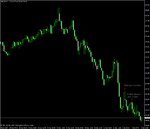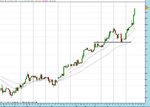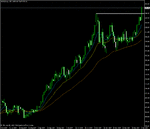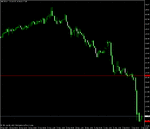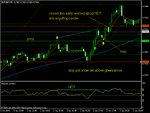Market gaps
Fortunately I have not, previously, suffered a very severe market gap against me.
However, I frequently hold overnights and as a result, I like to be prepared.
The plan I am going to outline below is NOT something that is tried and tested. It is adapted from a rule that I found in an interview with Oliver Velez, a highly succcessful stock trader. I use it because having a plan, even if it is not perfect, is in my opinion far better than uncertainty and procrastination when the market is moving quickly against you.
Velez advises to let the stock trade for a full five minutes which will give the trader time to gain their composure and usually gets rid of the bulk of the overnight or premarket selling in a stock.
He then advises to mark off the low of the day and if that is then breached to sell 50% of the position.
He goes on to add that a further thirty minutes (including the first five) should then be given so the market has had time to get all of the panic selling out of the way and encourange bargain hunters to come in. Once this has been done, the absolute stop should be placed at the low of the day and the remaining 50% of the position should be liquidated on a break of this level.
If there is a rebound from this level I would look to trail my stop up behind it by placing it below the low of each previous HOURLY bar.
If the market is, at any time, to trade back up through the initial level where my stop would have been, I will place my stop back in its original position.
This is the basic plan although it may be slightly adapted according to the severity of the break. Back near the beginning of my position in Wheat I nearly had to put this plan into action because of a gap down in out of hours trading but fortunately for me, it was trading back up by the open. This was covered earlier in the thread.

